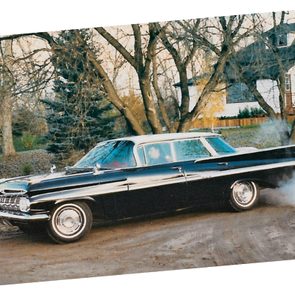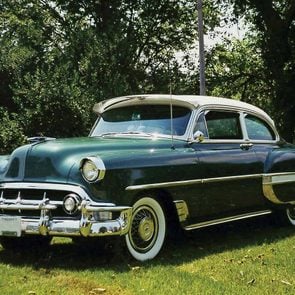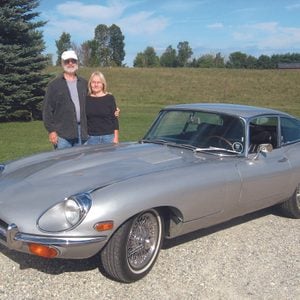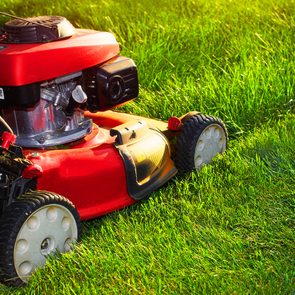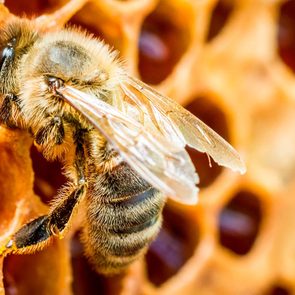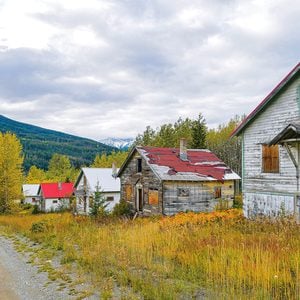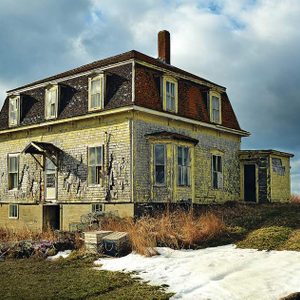
Finding the Best Toothbrush
To find the best toothbrush among the overwhelming options on the drugstore shelf, start with the bristles. The designs—flat, rippled, dome-shaped, and more—come down to personal choice. But most dental professionals recommend soft brushes, which work best for removing plaque and debris, and are less harsh on your teeth and gums.
There are also alternatives for brush heads (e.g. rectangular or tapered) and handles (e.g. different grips and flexible necks). Again, it’s a matter of preference. At the end of the day, the best toothbrush is one that feels comfortable and whose head is small enough to reach all areas of your mouth, right to the back teeth. “If the head is too big, it’s hard to manipulate,” says Euan Swan, manager of dental programs for the Canadian Dental Association.
For people with orthodontic appliances and other dental work, specialty tools can clean hard-to-reach places and get under bridgework, augmenting regular brushing. (Talk to your dentist or dental hygienist.) Other brushes can wrap around braces, but what’s most important is cleaning thoroughly and getting between the braces and the gum line, says Dr. Bob Cram, an orthodontist in Red Deer, Alberta, and past-president of the Canadian Association of Orthodontists.
“Don’t get hung up on the design—just get in there and scrub,” says Cram.
Manual vs. Electric: Which is the Best Toothbrush?
Should you power up? Power brushes can make for a less labour-intensive and more consistent brushing motion, and allow for oscillation and rotation that you simply can’t perform with your own hand, notes Dr. Maryam Adibfar, a Toronto dentist. These brushes can also be ideal for people who, due to a disability or limited manual dexterity, have trouble handling a manual brush.
Do power brushes work better than manual brushes? Adibfar swears by them, but to use an analogy, consider a poor golfer who buys a fancy driver. Chances are, the ball still ends up in the woods. Whatever the features—power or manual, bristle or handle design, timers or sensors—what matters most is technique. Spend two to three minutes at it, use a gentle, circular motion, and clean every surface of every tooth.
“If you take the time and brush properly,” says Swan, “any brush will get the job done.”
Now that you know how to find the best toothbrush for you, find out how often you should be replacing your toothbrush.
Self-Service Car Washes
It’s important to consider these car wash pros and cons before heading out to clean your ride. Roll up your sleeves (without using any of your tools) at a self-service car wash, which typically costs less than $15. Use their water hose, soaps and sponges—all you have to bring is your attention to detail and a bit of elbow grease. Check before you go to see if you need to bring towels for drying. Washing, rinsing and drying one section at a time will help avoid water spots.
Be sure you use this option under the right conditions, though. If you’ve been driving around for a while, your car is probably too hot to wash; the soap will dry and leave spots before you can rinse it off. The same goes for washing with the sun beating down on you. (While you’re at it, discover how to clean rubber car mats.)
Automated Car Washes
Automated in-bay car washes pull your car along a conveyor belt while machines dispense soap and water. Automatic car washes can be a speedy and economical choice, costing between $7 and $15. Cleaning the undercarriage, wheels and tires or using additional soaps and waxes costs extra, usually $2 to $3 per extra service.
There are soft-touch automated car washes that use cloth to scrub the car, and no-touch automated car washes which only use high-pressure water and soap (not foam).
Soft-touch washes offer a more thorough cleaning. If the car wash uses brushes, they usually reach every part of the car and are good for getting rid of dust and pollen. But the force of the brushes can damage side-view mirrors or antennas. (Here’s how to replace a broken side-view mirror.) If the car wash uses thick cloth strips, the car must also be thoroughly rinsed before the cloth touches it or else the cloth can cause the dirt to scratch the paint.
No-touch car washes are cloth- and brush-free so there’s no risk of scratches. They also use less water. But without brushes or cloth strips, a no-touch wash may be less effective. No-touch washes that rely on more cleaning agents to make up for the lack of cloth or brushes could also damage your paint.
Some automated car washes use machine dryers at the end, but some will have staffers dry your car by hand with towels. If they provide this service, the car wash will cost a few dollars more.
Hand Car Wash
Professionals washing your car by hand will go over every inch with a thorough eye and use top-notch supplies. Automated car washes won’t notice their mistakes or errant dirt and spots, but a professional won’t let you leave with any dirt or water spots. Plus, you can splurge on waxing, detailing and interior cleaning. The only con is the extra time and money; hand-done car washes can cost from $20 to $50. But if your car needs some TLC, it could be worth it.
Now that you know these car wash pros and cons, check out these cleaning tricks professional car washers won’t tell you.

My father had already been friends with Ken for years at the time this story first began. They’d bonded over one thing that brings so many men together: the love of old vehicles. Ken Turnbull of Treherne, Manitoba, had been a mechanic for years, starting with Lancaster bombers with the RCAF and working his way to where he was now: restoring steam engines and antique cars. A radar tech while in service, my father was a highway truck inspector with a penchant for thrift stores, socializing and knowing where every antique car in southern Manitoba was parked.
“Rick,” Ken said to my father, “I’m getting older, but I think I have one last car in me,” and held up the gift that my father had given him months back: a plastic and metal miniature of a 1915 Model T military ambulance. This wouldn’t be the first time the veteran had worked on a Model T, but this one would be different.
My father is a frugal man. There are catalogues with newly made parts for some of the oldest cars, but those cost thousands of dollars. There were already-restored cars that could be refitted into the ambulance model, but that was no fun. Instead my dad drove up to Ken’s garage one day with a trailer-load of rusty fenders and axles that looked like they’d been pulled straight from the back 40 of some nameless farm (which they likely had been). Thus started the odyssey that would continue the rest of that year, and into the next.

The plan was that Ken would restore the parts Dad brought him if possible and send him away again with a wish list of new parts. Whenever my father was there, Ken would stop working and talk, or humbly show off his progress. He would never work with an audience, no matter how willing that audience was to help.
The parts kept coming. First rusty bits of frame, then a surprisingly intact motor. The wood body came from re-claimed beams off of a railroad bridge and the coil box from a car that no longer ran. The only new parts on the Model T ended up being the canvas on top, the tires under it and the paint covering it all. Even the paintbrushes were cleaned and used from other projects! Everything was recycled, refurbished, or fabricated from not-quite-right parts from other antiques, or other things that might suit a specific purpose. For example, the hood ornament is actually a nose ring from a bull, with a metal red cross symbol soldered on.
My father insisted on several details. Never anything major; he trusted Ken with everything to do with building a car. The few pieces of work that my father managed to achieve under Ken’s supervision were mostly decorative. He installed a small wooden sleeve by the driver’s seat to hold a book titled Poems of a Red Cross Man by Robert Service. Near the front fender, he hand-traced a sketch of “Winnie the Bear” by A. A. Milne, Canadian Army Veterinary Corps. Most significantly, he sought out Ken’s military service number, and used it as the registration number for the Model T. To this day, the number is painted on both sides of the ambulance and appears on its vehicle registration.

The day finally came when the car would officially be considered complete. It had already been inspected and registered, and ready for its maiden voyage. My father arranged for it to be played out of the garage by bugler Les Allison, under the watchful eye of a contingent from the Royal Canadian Legion, and the glass eye of the local news crew. It went without a hitch; the ambulance ran perfectly, the Legion members and news reporter all got to enjoy rides, and Ken said goodbye to the last car he would complete. Until Ken’s death in 2015, my father would let him drive the ambulance in any parade he liked, happily trailering the car across the province all summer.
It doesn’t see as much road time as it used to (40 km/h and wooden seats not being conducive to road trips), but every so often the 1915 Model T ambulance with its bull’s nose ring, a 100-year-old book of poetry and veteran’s service number tattoo emerges from her trailer for another trip down memory lane, just how Ken Turnbull would have wanted it.
Next, check out this collector’s impressive wartime motorcycle replicas.
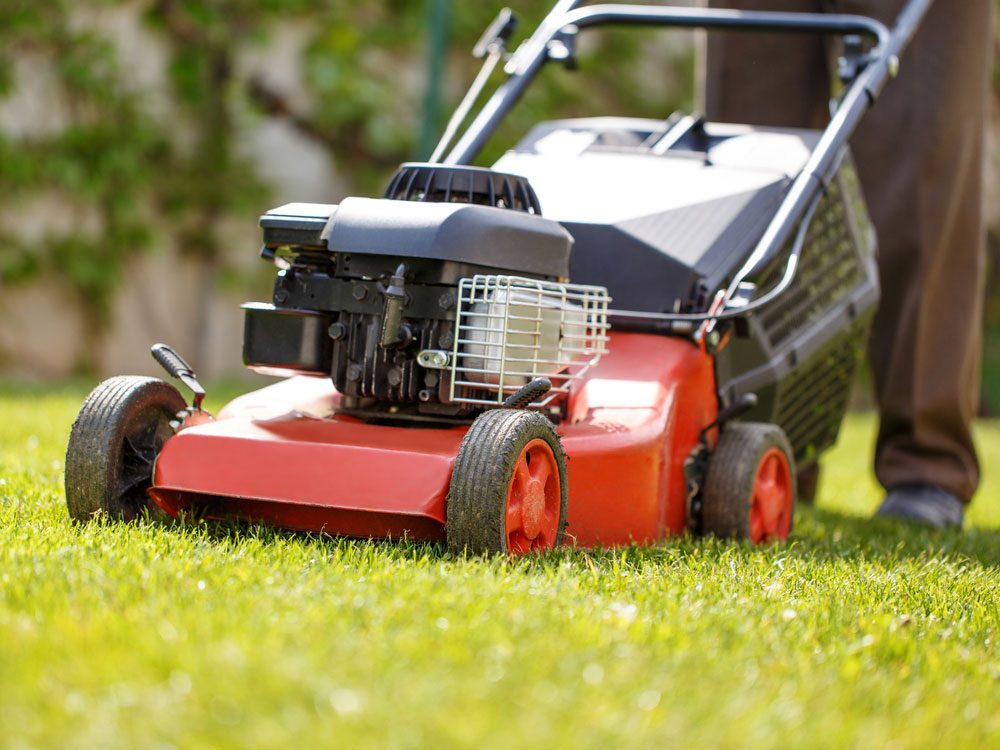
Mowing Your Lawn Every Week? Stop Right Now.
We get it—there’s nothing as satisfying as looking out at a freshly mowed lawn on a summer’s day. Mowing your lawn means keeping those weeds and wildflowers tame around your landscape, which probably seems like a problem that needs to be dealt with frequently. However, you may want to consider letting those wildflowers and weeds grow just a bit for the bees.
Yes, bees. By mowing your lawn every week, you are leaving no life for bees to feed on. Now maybe this doesn’t seem like a huge problem, because who would want bees on their lawn? They are even more annoying than those weeds and wildflowers, so mowing your lawn consistently seems like the ultimate solution. However, if you keep a garden (or care about the growth of vegetables and fruit), you need to feed the bees.
Bees are natural pollinators, which help the growth of your plants. By having plants to feed on, they can cross-pollinate and help to naturally fertilize your plants. This is especially crucial for the growth of vegetables and fruit. According to an article published by the National Resources Defense Council (NRDC) in March of 2011, cross-pollination helps at least 30 per cent of the world’s crops to grow, and 90 per cent of wild plants. Without bees, these plants wouldn’t thrive or could even die off completely.
In 2007, beekeepers were seeing cases of colony collapse disorder (CCD) where honeybees were leaving their colonies for good. Typically worker bees don’t leave their colonies unless a queen leaves the hive and brings along bees with her. The fact that bees are leaving can happen for numerous reasons, but not having enough food or water is certainly one of them.
Now maybe you hate bees and don’t really care about them thriving at all, but if you care about your garden, you would consider mowing your lawn at least every other week so the bees have something to feed on (and use to pollinate your precious plants).
Next, check out these expert (and eco-friendly!) lawn care tips.
Although Queen Elizabeth II turned 96 on April 21 of this year, the official birthday of the monarch is celebrated on a different date altogether.
Like many British monarchs before her, the Queen commemorates the occasion on two separate days—once on the actual anniversary of the day she was born (April 21) and again on a Saturday in June (dubbed as the “official celebration,” scheduled for June 11 this year). The reason is rather simple and owes its origins to the timeless dilemma of fickle British weather. (Find out how the Queen’s Platinum Jubilee will be celebrated in Canada this year.)
Why Does the Queen Have Two Birthdays?
The established tradition dates back to 1748 with King George II, who was born in November. The royals (as expected) like to dabble in opulent outdoor festivities for hordes of people, so the frosty chill was rather inconvenient. Because he didn’t want to put his subjects at risk of catching colds, his birthday celebration was merged with the annual Trooping the Colour parade. Prior to that, it was strictly a military event in which regiments would display their flags or “colours” so that soldiers could familiarize themselves.
But because George was renowned for being a fierce general (in addition to being a royal) for his leadership involvement at the Battle of Dettingen in 1743, the celebration seemed appropriate for his stature. Edward VII, who followed George and also had a November birthday, officially standardized the practice, launching a plethora of onlookers that was able to connect the royal’s birth celebration with the equally respectable British troops.
This concept became a habit that still prospers to this day; British sovereigns are all granted the option of inheriting an “official” birthday. The spring day of April 21 was deemed too chilly for Queen Elizabeth’s sumptuous bash, so they decided to adhere to a safer (and warmer) June alternative. Although the date is technically associated with the Trooping the Colour in the U.K., several commonwealth nations around the world continue to recognize it as a public holiday.
As for the Saturday element, the royals decided to set the date so that more members of the public could enjoy the jubilee without having to worry about their conflicting work schedules. This was a change from the Thursdays that were previously established during the earlier part of her reign.
The Queen usually spends her actual birthday privately, but the day is certainly not what we would call a clandestine occasion. The anniversary is still commemorated with a round of gun salutes at noon: a 41-gun salute in Hyde Park, a 21-gun salute in Windsor Great Park, and a 62-gun salute at the Tower of London.
Now that you know why the Queen has two birthdays, take a look back at Her Majesty’s incredible life in 30 quotes.
There have been many stories told of some very bad things happening at old, abandoned places, because not only are these locales a magnet for urban explorers and history buffs, they also attract vandals, thieves, squatters, wild animals and stray pets. Nevertheless, over the years I have researched and explored abandoned mines, bridges, houses, schools, theatres, jails, boats, planes, trains and ghost towns, documenting it on video and taping interviews whenever possible so others can get a sense of the experience, albeit vicariously via my YouTube channel.

Gear For Exploring Abandoned Places
I get a lot of people asking me what equipment I use when exploring these remarkable abandoned places. So here’s what I pack: water, cell phone, steel-toe boots, gloves, protective masks, bug spray, as well as my Panasonic 4K camera with stabilizer, camera lights and an external mic. I have also added a drone to my bag of equipment, which is what I use for filming and also for aerial shots of the sites I visit. This drone was an excellent addition to my equipment because it gives the viewer another view from the sky.

Why Abandoned Places Exist
Why are all these places abandoned, you ask? Developers have been buying up land at a fast pace and usually leave the houses and buildings for years before demolishing them. Other reasons include death with no family, default on the mortgage or property tax, and some farmland has old abandoned farmhouses on the property.

The Appeal of Abandoned Places
Over the years, I have explored abandoned places alone or with a few family members and friends. I truly thought that I was the only one into this sort of hobby. I decided to start filming my abandoned exploring adventures within Canada. I soon realized that there are many others like me and that they have their very own YouTube channels and social media accounts, posting pictures and videos of abandoned places. I was so excited and I started watching hours of such videos. I decided to start my own YouTube channel, posting episodes of abandoned places I explore (Abandoned Urbex Canada). At first, I thought that only a few people would watch, and I was hoping for 1,000 subscribers. My channel quickly blew up and I have now reached over 85,000 subscribers, and over ten million views. People from all over the world started watching my videos and commenting on them. I have been featured in a few magazines, news articles, TV shows and I was also an inspiration for the low budget motion picture horror film Red Woods. I am also an amateur photographer and have been learning as I go.
Read the fascinating story behind Ontario’s most famous ghost town.

Where My Fascination Began
When I was a teenager I was at my friend’s parents’ cottage and a local told us about an abandoned cottage in the forest on the water’s edge that had a black bear living in the crawl space under the cottage. I was very excited and convinced a few friends to go and check it out. We explored the cottage, finding it heavily vandalized inside. The roof had holes so the floors were mouldy and rotten. We proceeded down the side of the house to find the crawl space. We noticed two large doors, wide open. With our flashlights we spotted the black bear in a dirt pile in the three-foot crawl space. We quickly left and never returned.

An Act of Preservation
Sadly, most of the abandoned places I visit will at some point be demolished, so having a chance to explore and document them by taking pictures and video is fascinating to me and my viewers.

“Demolition By Neglect”
Some locations I explore are historic places, so they are maintained, preserved and protected from being demolished. Sadly, some historic places that are supposed to be preserved and protected are neglected and forgotten. They quickly start to decay and eventually collapse or have to be demolished as they can’t be saved or they are a safety concern. This is called “demolition by neglect.” Newer buildings also tend to have a life expectancy of only 40 years, but most of the houses and buildings I have explored were made to last a lot longer.
Next, check out 10 of Canada’s most haunted places.






